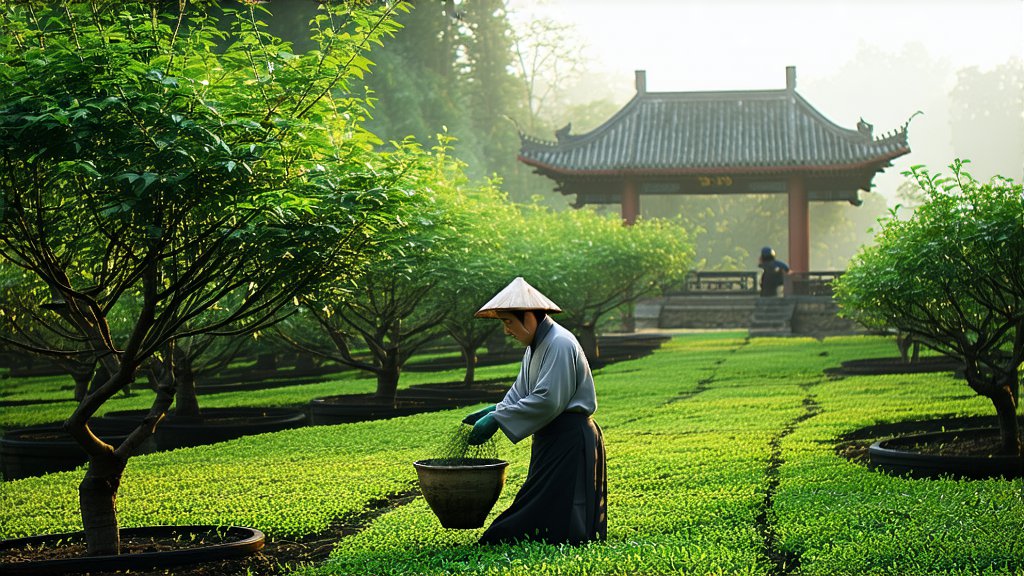
In the verdant landscapes that cradle the West Lake in Hangzhou, China, lies a treasure trove of history and flavor encapsulated within the delicate leaves of Longjing tea, also known as Dragon Well tea. This iconic green tea has been enchanting palates for centuries and stands as a testament to China's rich tea heritage. Join me on an exploration of this exquisite beverage, where we delve into its storied past, intricate varieties, meticulous production process, and the artful appreciation it demands.
Historical Roots
Longjing tea's origins trace back over a thousand years to the Tang Dynasty (618-907 AD), though its prominence flourished during the Qing Dynasty (1644-1912). It was then that Emperor Kangxi was said to have bestowed upon it the prestigious title "Dragon Well," after being captivated by its exceptional quality. The tea gained further fame when it became one of the key contributors to the famous "Eight Immortals" tea, a blend presented as tribute to the imperial court.
Varieties of Longjing
While Longjing itself is a distinct variety, it encompasses several grades based on the time of harvest and the part of the plant used. The most prized among them are:
-
Xin Cha (Premium Spring Tea): Harvested before Qingming Festival (Around April 4th), these early shoots boast tender leaves and a vibrant, grassy flavor profile.
-
Mengding (Tippy Tea): Picked from the topmost buds and young leaves, Mengding offers a sweet, slightly nutty taste with a hint of orchid fragrance.
-
Yulu (Rain Before Qingming): Harvested between Qingming and Grain Rain (Around April 20th), this tea features a fuller body and a more pronounced vegetal character.
-
Guyu (After Qingming): Later in the season, these leaves produce a robust, earthy cup with a stronger aroma.
Crafting the Perfect Cup
The artistry of Longjing tea production is a harmonious blend of tradition and precision. Here's how it unfolds:
-
Handpicking: Only the youngest shoots and leaves are selected, ensuring optimal tenderness and flavor. This labor-intensive process often involves multiple rounds of picking throughout the season.
-
Withering: Freshly picked leaves are spread thinly to allow moisture loss, enhancing their aroma and reducing bitterness.
-
Fixation: Unlike other green teas, Longjing undergoes a unique pan-frying process. Tea masters skillfully toss the leaves in large woks over high heat, which halts oxidation while imparting a distinctive roasted note.
-
Shaping: As the leaves cool, they are hand-pressed and rolled into their characteristic flat shape resembling the blades of a well or dragon's talons, hence the name 'Dragon Well.'
-
Drying: Finally, the shaped leaves are gently dried to remove any remaining moisture, locking in their freshness and flavor.
The Art of Tasting Longjing
To truly appreciate Longjing tea is to engage in a sensory journey that transcends mere consumption. Here's how to embark on this ritual:
-
Warm the Teaware: Begin by rinsing your teapot and cups with hot water to elevate the temperature and cleanse away any residual flavors.
-
Measure and Infuse: Use approximately 3 grams of Longjing per 150ml of water. Steep in water heated to around 80°C (176°F) for 1-3 minutes, adjusting according to personal preference for strength.
-
Observe: Witness the transformation as the dry leaves unfurl gracefully, releasing their emerald hue into the water.
-
Sip and Savor: Take slow sips, allowing the tea to coat your palate fully. Note the initial sweetness followed by a subtle umami, a testament to its complex amino acid content. Pay attention to its lingering finish and the cooling sensation it leaves behind.
-
Reinfuse: Longjing can be steeped multiple times, each infusion revealing new layers of flavor and aroma. Adjust steeping times progressively longer for subsequent brews.
In conclusion, Longjing tea is not merely a drink; it embodies a philosophy of life—one that celebrates harmony, balance, and the beauty found in simplicity. As you raise your cup to your lips, let it transport you to the tranquil shores of West Lake, where nature's bounty meets human craftsmanship in perfect harmony.